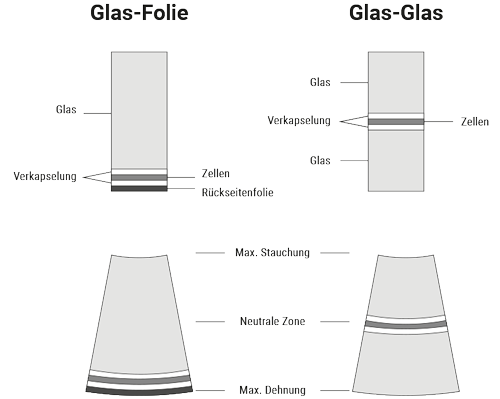Glass-glass solar modules
Two glass panes are combined into one solar module. They become laminated safety glass and therefore have unique properties.
Areas of application
Applications include facades, railings, in-roof and on-roof applications, infrastructure structures (for example, dams, noise barriers, etc.), open spaces, carports, alpine and desert applications.
Type of installation
Glass-glass solar modules can be installed both with or without frames. The mounting systems FAST, MATCH, LEVEL, NICER, LOCKUP, LOCKIN, LAYUP and LAYIN are especially suitable for the integration of glass-glass solar modules.
Non-glare solar glass
Particularly anti-glare surface structures are used.

Technical specifications
Megasol Cell technologies: Mono HiR / Mono HiR RearCon
Cell sizes: 156.75 mm (M2) / 158.75 mm (G1) / 166 mm (M6) / 182 mm (M10) / 210 mm (G12)
Cell geometries: Full-square, Half-cut, Triple-cut, Custom
Typical power (Full Black)*: 184-232 Wp / m2
Typical power (colour)*: 150 - 200 Wp / m2
Encapsulation material: EVA or PVB
Glass thickness per pane: 2 - 12 mm
Hail protection: Protection class 5 (hailstone size 50 mm)
Fire safety classification: B - s1, d0 according to European fire protection standard EN 13501-1.
* The square-metre performance of the solar module depends on the specific format
Properties
Front and back glass in combination with durable encapsulation material protect the components from vapour penetration. In the «neutral zone» between the panes, the cells remain stress-free (no compression or bending) which reduces the occurrence of so-called micro cracks. This results in a potential lifespan of over 50 years.
Free design scope, high durability and stability characterise this solar building material. All glass-glass modules can be designed freely. Glass-glass modules are manufactured in Deitingen, Switzerland.

